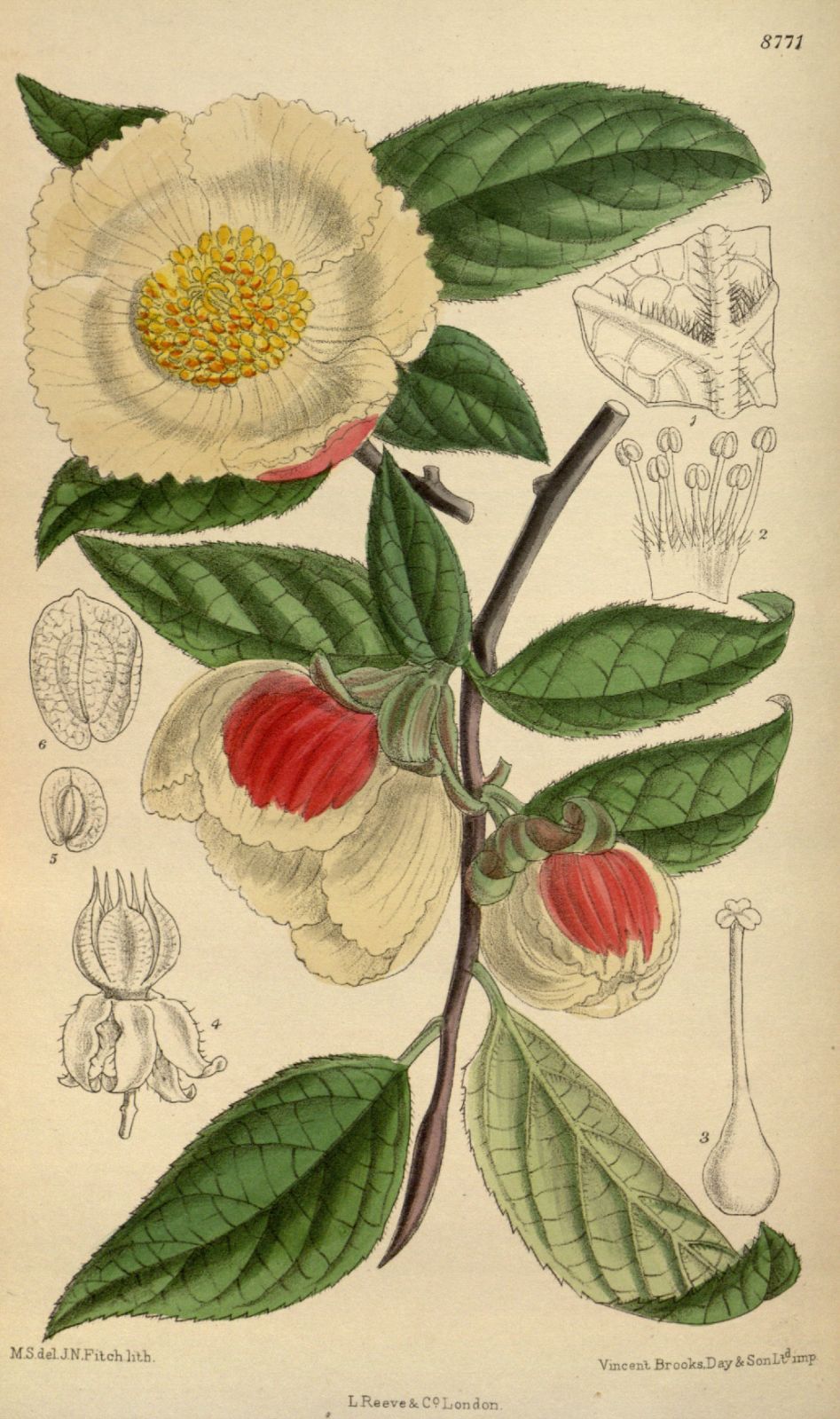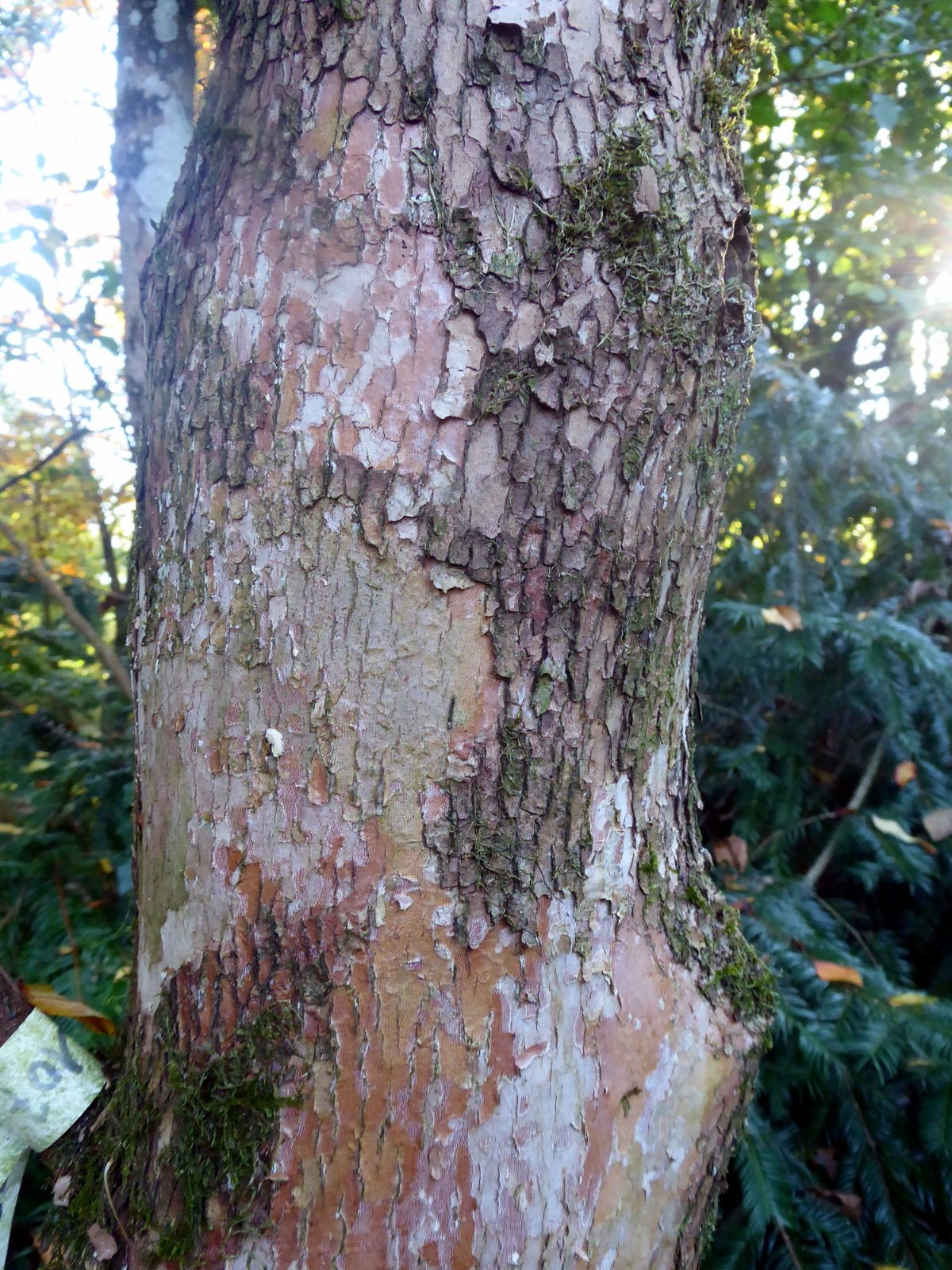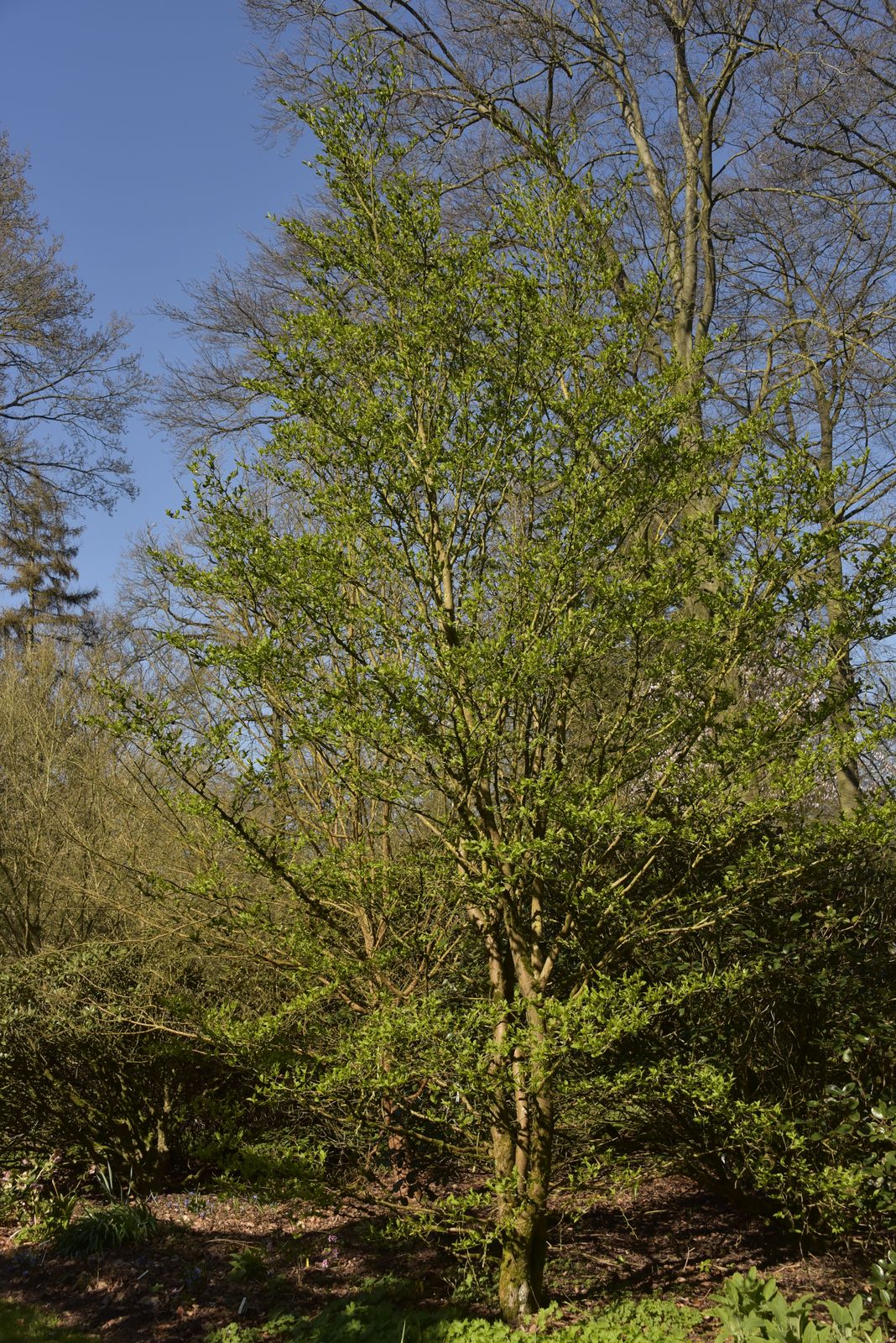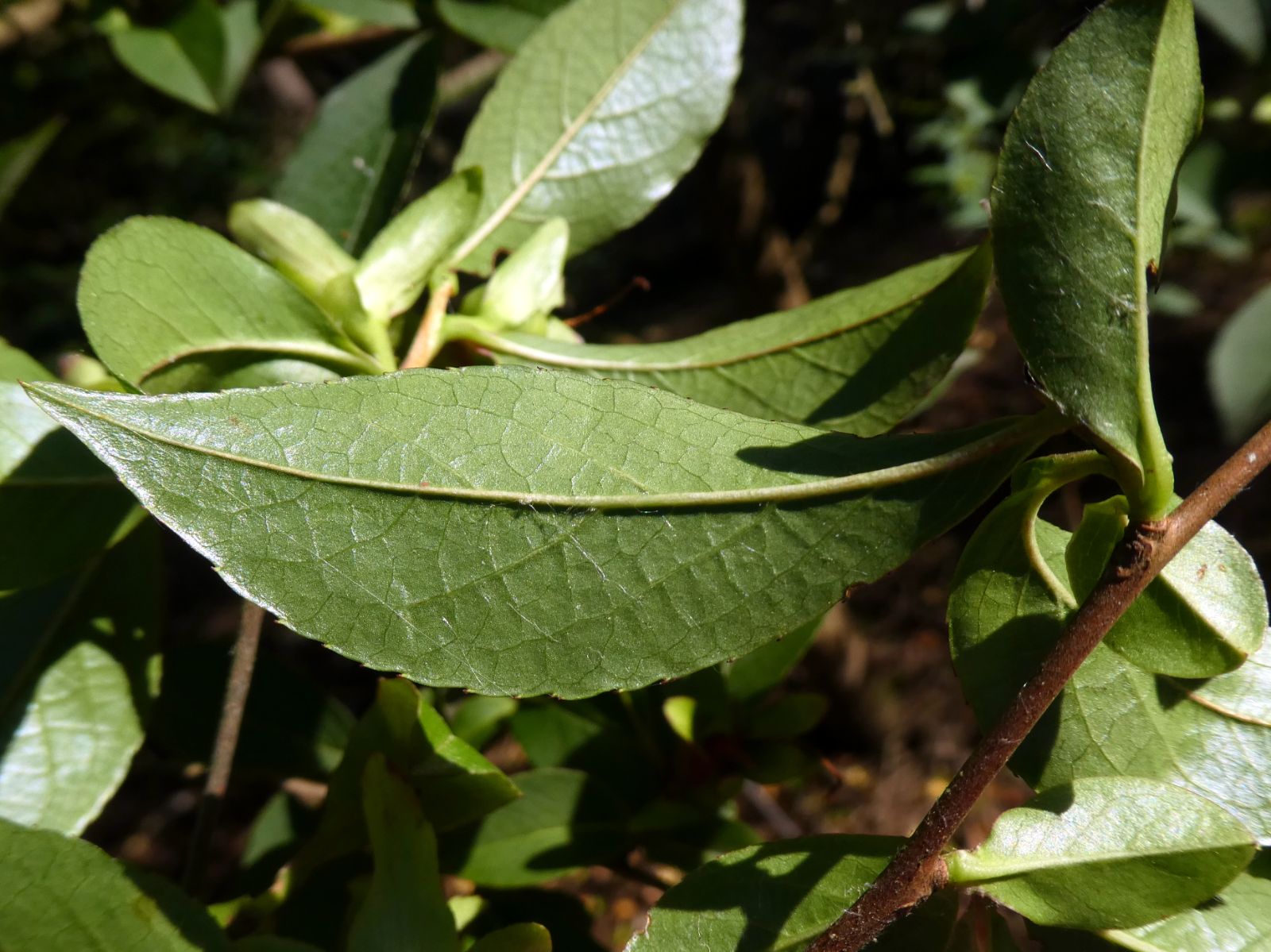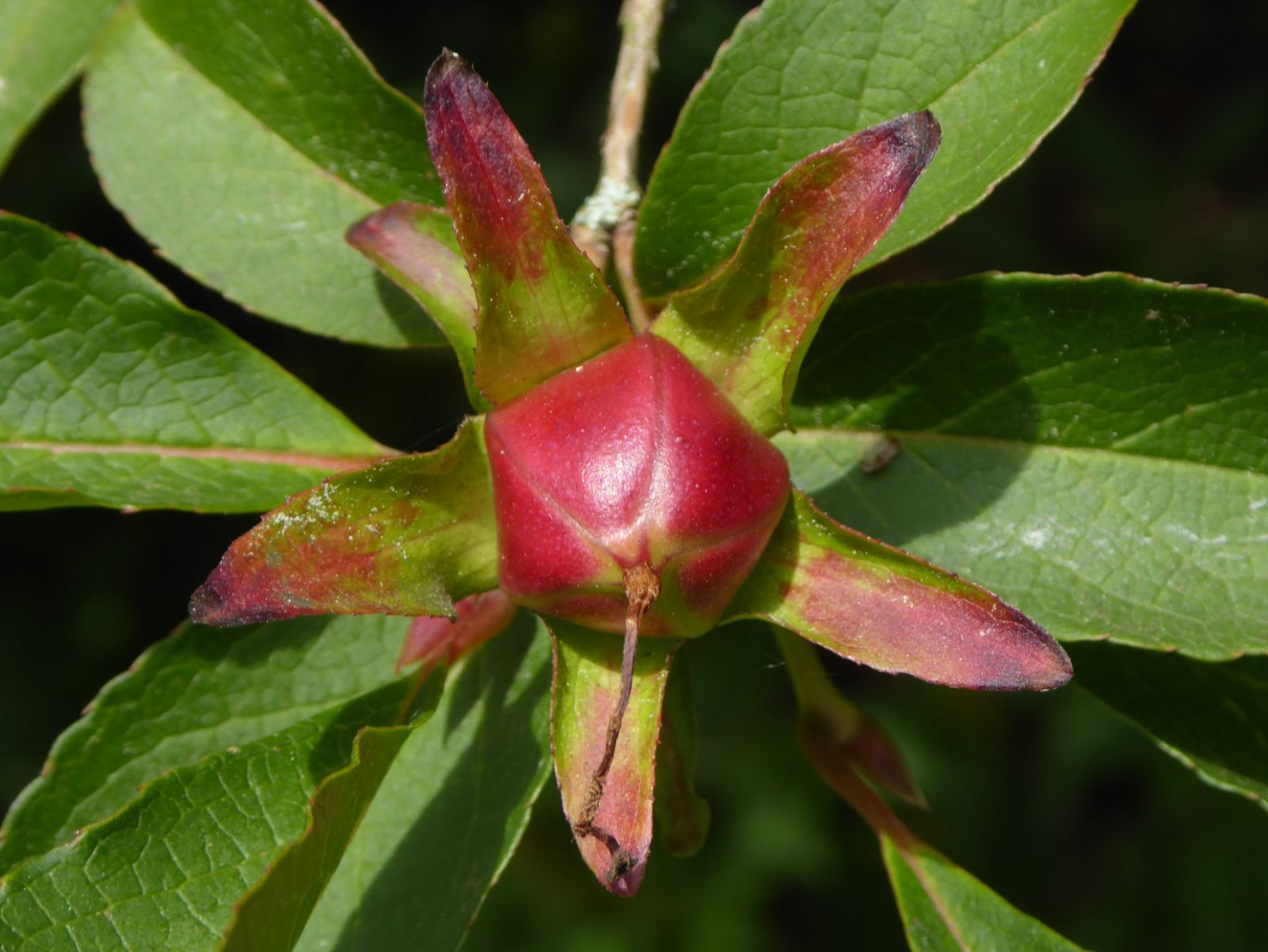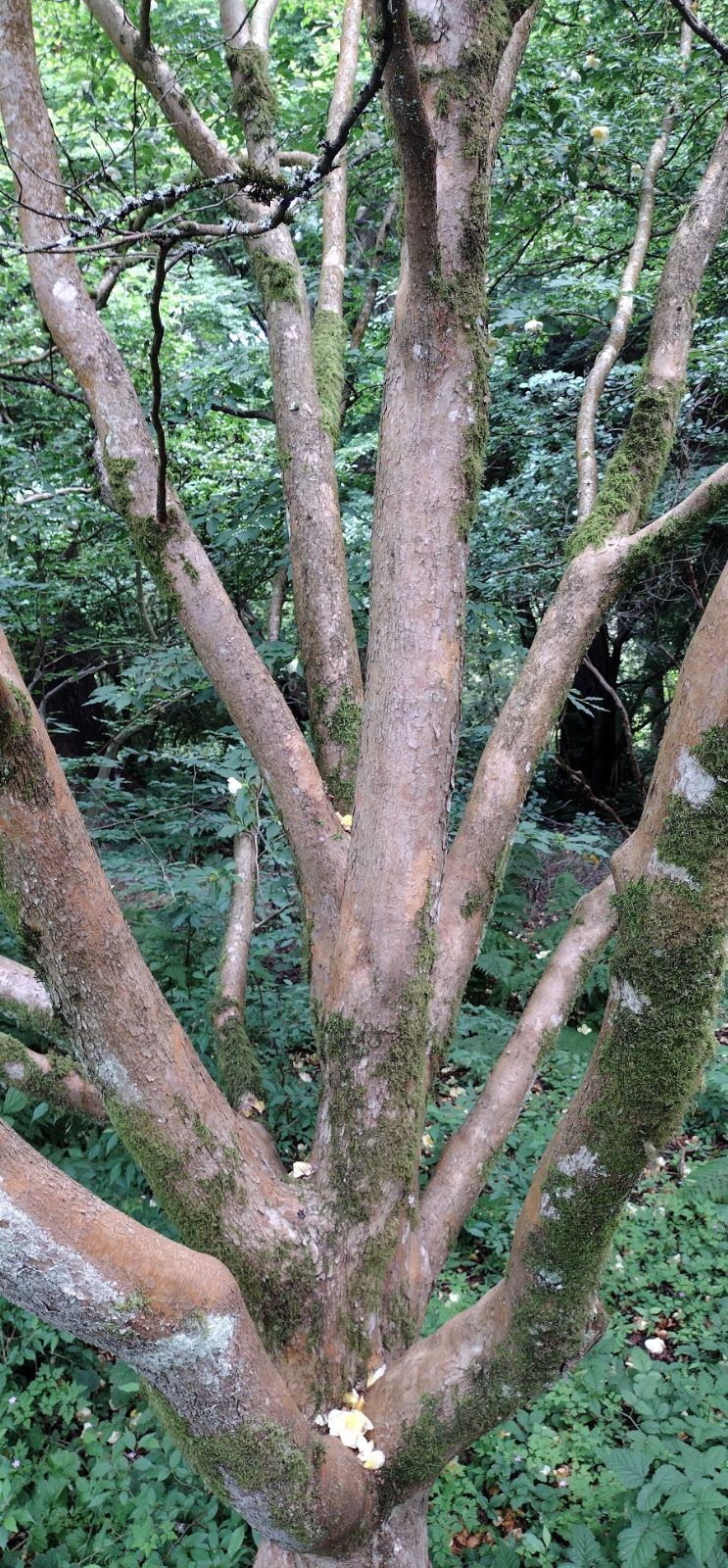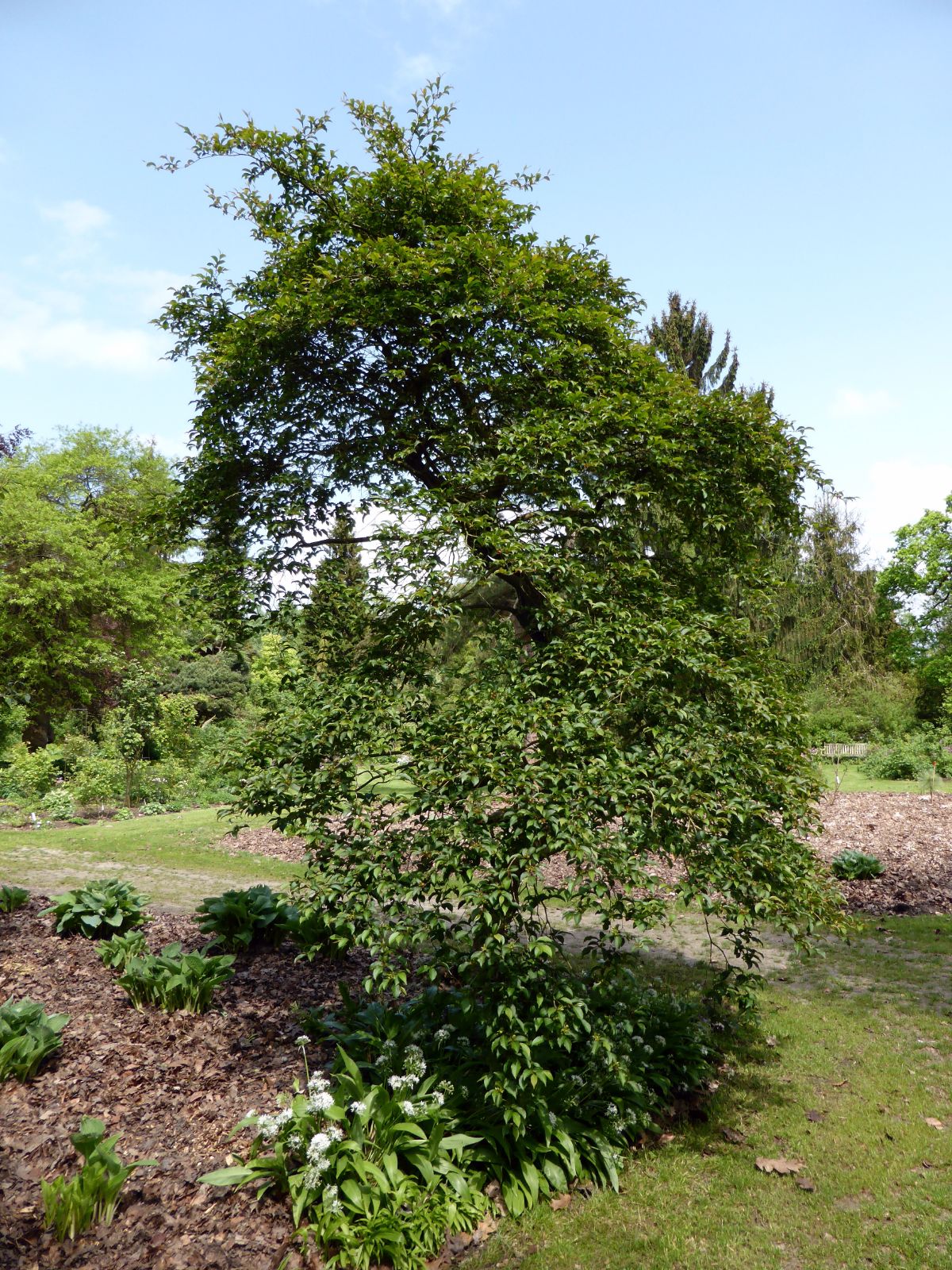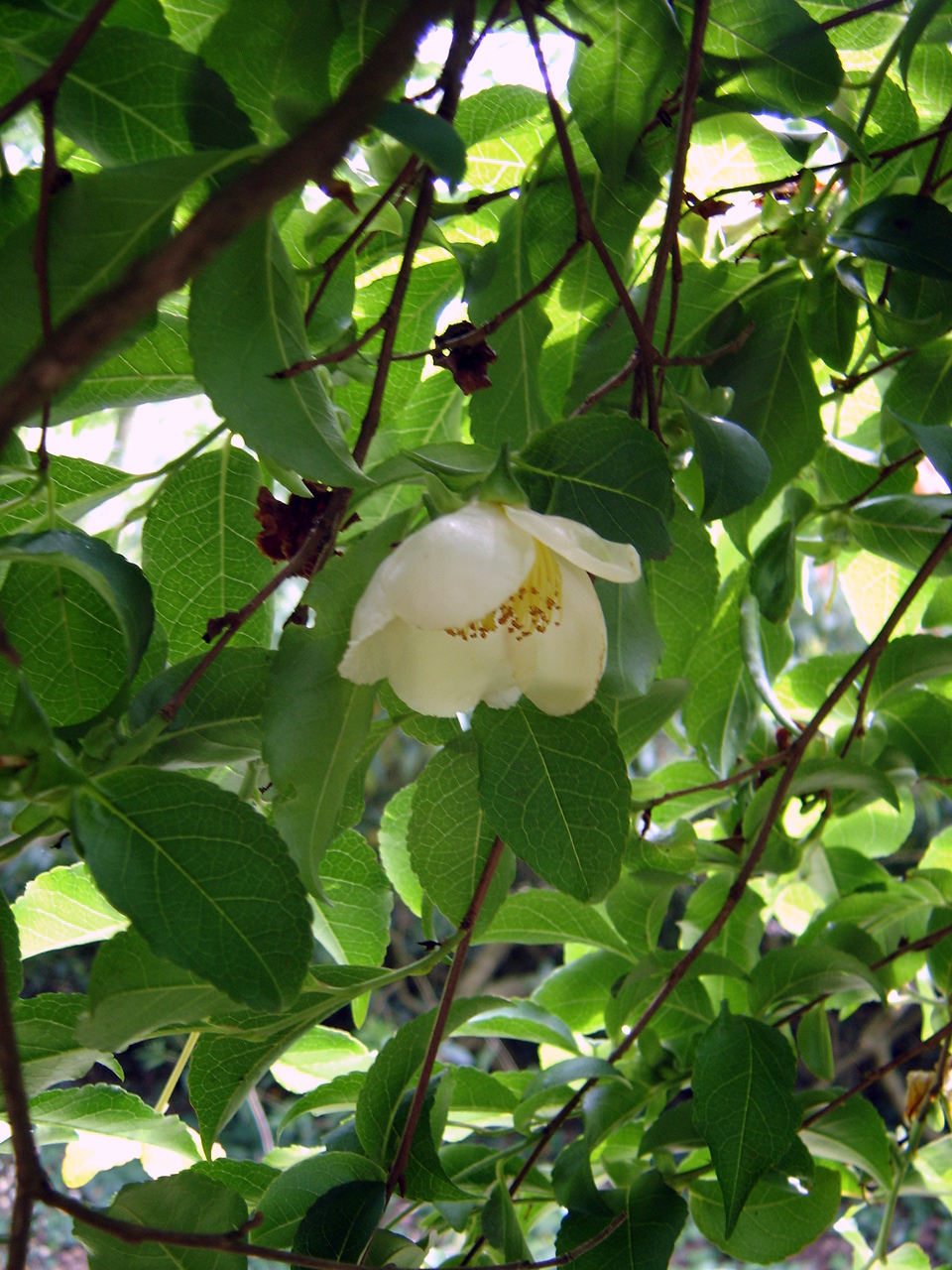Stewartia serrata
Sponsor
Kindly sponsored by a member of the International Dendrology Society.
Credits
John Grimshaw (2016)
Recommended citation
Grimshaw, J. (2016), 'Stewartia serrata' from the website Trees and Shrubs Online (treesandshrubsonline.
Genus
Deciduous trees to 10 m. Bark smooth, reddish-brown, exfoliating; first year twigs finely pubescent, grey to reddish-brown, winter buds flattened, with 2 imbricated scales. Leaves (1.7–)2.5–7.5(–8) × (1)1.4–2.6(–4) cm, ovate to lanceolate or oblanceolate, papery, more or less glabrous above, glabrous below or with hairs on midrib, sometimes with tufts of hairs in vein axils, margins serrulate, often ciliate, apex acuminate, base cuneate to attenuate; petiole (2–)5–12 mm, shallowly grooved above. Flowers solitary: pedicel 4–5(–7) mm; bracts 2, 13–17 × 7–9 mm, leaf-like, often flushed red, lanceolate, apex acute, finely serrulate, undulate; sepals (12–)19–25 × 10 mm, fused at base, the free part resembling the bracts, lanceolate with acute to apiculate apices and undulate, serrulate margins, eventually deciduous from the fruiting capsule; corolla white, though occasionally tinged reddish at base externally, 3.5–4 cm diameter, lobes (25–)30–35 × 20–25 mm, obovate to suborbicular, margins erose, base cuneate, covered with fine silky hairs externally; stamens numerous, filaments to 25 mm, fused at base to form a tube 7 mm long, pubescent at the base of the free portion; ovary 3–4 mm long, subglobose, 5-angled, glabrous, tapering into a glabrous style 17–20 mm long, terminating in 5 very short stigmatic arms. Capsules (13–)16–18 × (12–)14–17 mm, reddish-brown, completely glabrous, subglobose, 5-angled, with a short rostrate apex (the long style breaks off near the apex of the ovary). Seeds 2 per locule, 9–12 × 5–7 mm, planoconvex, obovate in outline, oblique at the notched base with a narrow wing. Flowering early summer. (Ohwi 1965; Spongberg 1974).
Distribution Japan south-central Honshu, Shikoku, Kyushu
Habitat Montane forest
USDA Hardiness Zone 5-7
RHS Hardiness Rating H5
Conservation status Not evaluated (NE)
Bean (1981) records ‘It was scarcely known in gardens until portrayed in the Botanical Magazine in 1918 from flowering specimens sent to Kew by Sir Edmund Loder in the previous year from his garden at Leonardslee, Sussex; it had also been in cultivation for some time at Nymans in the same county. Like all its kind, it is an attractive tree, and flowers freely’. Despite this it remains a scarce tree, with a presence only in specialist collections. A tree at Nymans was 6 m in 2007, and the British champion, in the Sir Harold Hillier Gardens, was 10 m in 2006 (Johnson 2011); after 30 years a tree in Seattle had reached 8 m (Jacobson 1996).
Coming into growth early it needs a sheltered site and although not a spectacular tree its flowers have a ‘demure daintiness’ and the red-tinged new shoots and calyces are attractive (Hsu, Boland & Camelbeke 2008). Autumn colour is dusty reddish purple (Dirr 2009).
'Pendula'
A tree with weeping habit grows at Arboretum Kalmthout under this name, though it is probable that it is invalid. It has now been propagated and is available in Belgium (A. Rammeloo, pers. comm. 2016).


